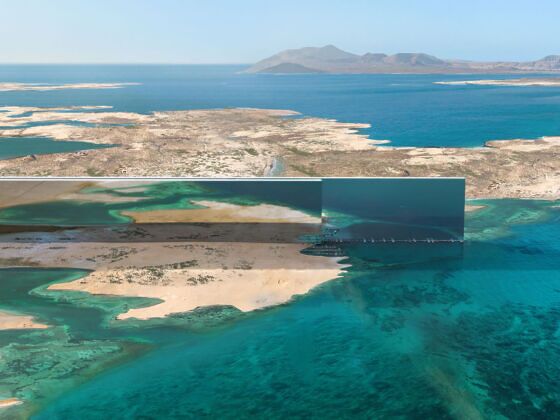At first, the idea of building an entire city in the shape of a straight line might sound puzzling. After all, wouldn’t it take that much longer to get from one end to the other? Would the traffic going from end to end be terrible? It turns out that the straight line model is actually based on efficiency of transportation, and when done right, it can be an incredible advantage to other layouts. That’s the goal with “The Line,” Saudi Arabia’s trillion-dollar futuristic city that’s an ambitious feat of engineering. The planned 105-mile long city in NEOM, in the northwest section of the country, is slated to cut across the desert in a straight line, hold nine million people, and serve as an almost utopian example of what cities could look like.


Why Saudi Arabia’s City of the Future Is Designed in One Straight Line
The Line is designed specifically with high-speed train travel in mind. This high-speed train, which will have only four stops, will traverse the entire city in just 20 minutes. The straight line structure is key to achieving this speed goal, since the whole city can be served by one massive train line. For a high speed rail to work best, the track needs to be as straight as possible. The lack of stations also means the train can go faster, since it won’t have to slow down or stop as much.
In today’s cities around the world people often need to change trains multiple times to get to their locations, partly due to the presence of road systems with cars as well as the need to branch off in different directions. The Line, by contrast, will not have cars at all, meaning no traffic. Instead, the Line will be a “5-minute city,” or a city where you can get all the essentials with a five minute walk. Anything you can’t access with a five minute walk will be accessible via the high speed rail line. And since the rail line will be underground, it won’t disrupt daily life or be an aesthetic eyesore.
Another reason for the linear design is to put citizens closer to nature. The narrowness of the city means no matter where you live, you’re never too far from the city limits, and the ability to access the desert. The buildings in the Line are planned to be around 650-feet wide and facing inward, with the outer walls lined with mirrored windows, so people inside can always look out onto open natural spaces.
According to Forbes, NEOM is also looking skyward when it comes to transportation efficiency and innovation. e-VTOL transport, like the Volocopter, is being considered, to even further cut down travel time between two points.
Trains revolutionized the way that cities were built, designed, and located. While much has changed in the centuries since industrialization, The Line shows that rails are still influencing the way people think about the places their lives are organized around. Only in this case, rails are being used to shape a much different, highly accessible future city.